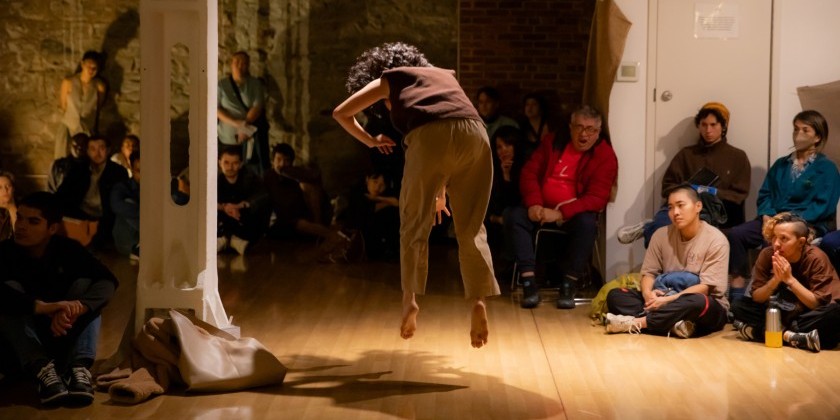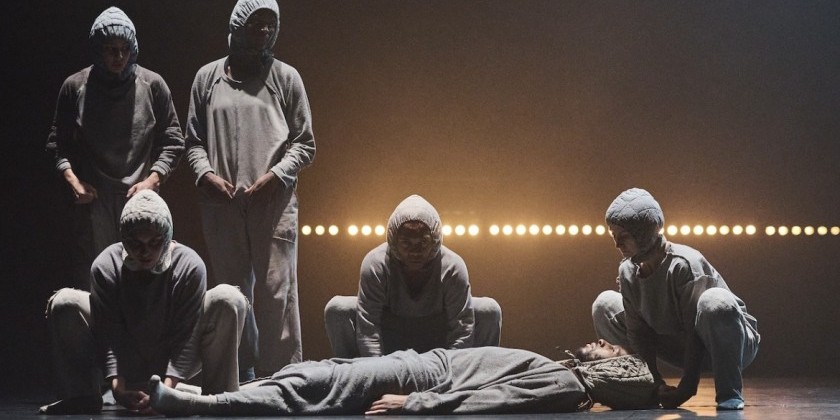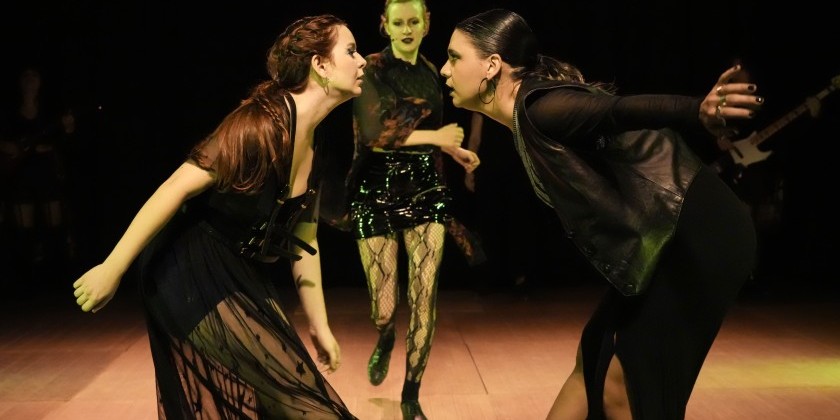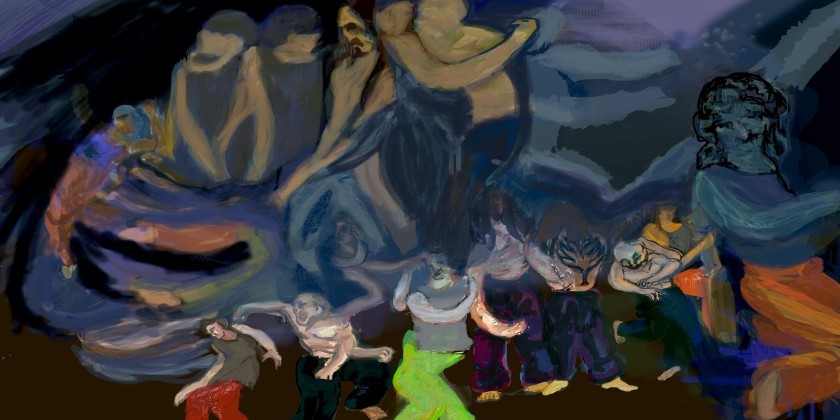AUDIENCE REVIEW: "Mujeres" by Anielille Gavino & Evalina Carbonell

Company:
Anielille "ani" Gavino and Evalina "wally" Carbonell
Performance Date:
September 22, 2017
Freeform Review:
The dancers take the stage for MILK showing a swirling motion of tumultuous emotion. Wally mentions how exhausting the chanting can be while performing MILK. The dancers' breasts are covered with a "x." Their body images are talking to their own unique beauty. They circle around in this feminine way. There is a sequence of brightly colored blouses before they expose their nakedness. Our focus is on a standing lady with pregnant belly, and unborn baby, and the dancers match the colors of her long skirt. The seated dancers rhythmic breathing is insinuating the birth of this baby. That is when the women start folding over top of one another, bending backwards and ascending forward from behind, the perpetual motion of this action is a floating effect. The dancers overlap and switch places in this rotating form. The swirling motion is full of bodies and I have lost a sense of space in exchange for the texture of flesh and blood that seems to fill the room. The dancers are moving in this shape that is larger than life. From the floor they sprawl to the back wall in an endless rush, losing oneself in the texture, and the internal flux in muscles/tissues reveals skin as an organ. This close relationship to the womens' bodies creates a feeling that I can only recognize with sweat, slaves, prisoners, or a work out that exercises the mind and the body.
I like to think about this first part as a view into the personality of the dancers in HERstory. Ani imitates the movie of a river and rocks with a sheet of plastic on stage. The movement is slow and the impact is a still portrait of a woman. The three seated dancers behind Ani begin to move and this creates a background that is like the wilderness. The projection on the back wall shows Ani going into the river, and when the water is up to her neck Ani's dancing becomes more fluid. The three dancers exit the stage after rhythmically pulling our attention toward the far wall and into the darkness. The next scene has an African dancer balancing around this wooden crate in dynamic poses. The video of Ani in the church is recalling a demand from western culture to conform. The entrance of more dancers is a promenade that is followed by Ani. Two dancer face each other on these wooden crates as a village might appear. A young female dancer enters the stage and is carried forward in a wave of dancers lying horizontally on stage. Ani shakes her dress snaking around the narrative. The young female dancer has taken a seat at the front of the stage and the dancers bring her offerings. The candles with a red glow make nightly rituals unseemly, but necessary for worshiping femininity as a godess. The destruction and reemerging beauty is sung and put in poetic verses. The young femal dancer, Malaya Kollman, shakes her dress like an angry goddess. Then the dance between man and woman is repeating similar battles to conform. The form that is created by Ani on top of the shoulders of a male dancer is a silhouette of a large totem figure of a woman. She runs circles around the male dancer, and gravitates to the male centric world in a leeway of contours in and out of his arms.











